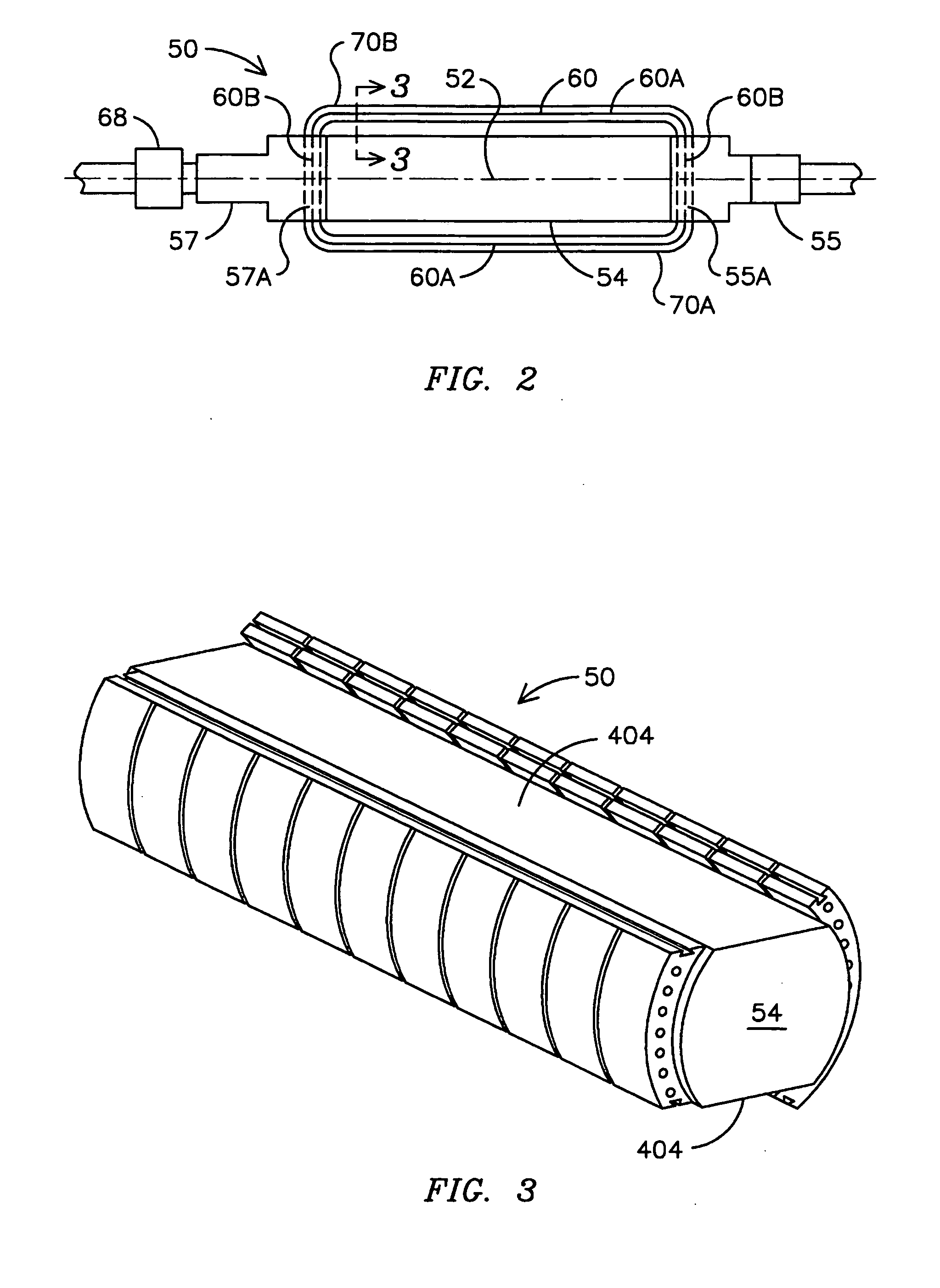Rotor winding shield for a superconducting electric generator
a superconducting electric generator and winding shield technology, applied in the direction of superconductor devices, magnetic circuit rotating parts, magnetic circuit shapes/forms/construction, etc., can solve the problems of premature degradation and winding failure, material can carry a substantial electric current for a long duration with insignificant energy loss, and mechanically massive and electrically complex structure of generators
- Summary
- Abstract
- Description
- Claims
- Application Information
AI Technical Summary
Problems solved by technology
Method used
Image
Examples
Embodiment Construction
[0027]Before describing in detail the particular non-magnetic rotor winding shield in accordance with the present invention, it should be observed that the present invention resides primarily in a novel and non-obvious combination of hardware elements and method steps. Accordingly, these elements and steps have been represented by conventional elements and steps in the drawings, showing only those specific details that are pertinent to the present invention so as not to obscure the disclosure with details that will be readily apparent to those skilled in the art having the benefit of the description herein.
[0028]The following embodiments are not intended to define limits as to the structures or methods of the invention, but only to provide exemplary constructions. The embodiments are permissive rather than mandatory and illustrative rather than exhaustive.
[0029]A rotor shield of the present invention overcomes the various limitations described above. The shield of the present invent...
PUM
 Login to View More
Login to View More Abstract
Description
Claims
Application Information
 Login to View More
Login to View More - R&D
- Intellectual Property
- Life Sciences
- Materials
- Tech Scout
- Unparalleled Data Quality
- Higher Quality Content
- 60% Fewer Hallucinations
Browse by: Latest US Patents, China's latest patents, Technical Efficacy Thesaurus, Application Domain, Technology Topic, Popular Technical Reports.
© 2025 PatSnap. All rights reserved.Legal|Privacy policy|Modern Slavery Act Transparency Statement|Sitemap|About US| Contact US: help@patsnap.com



